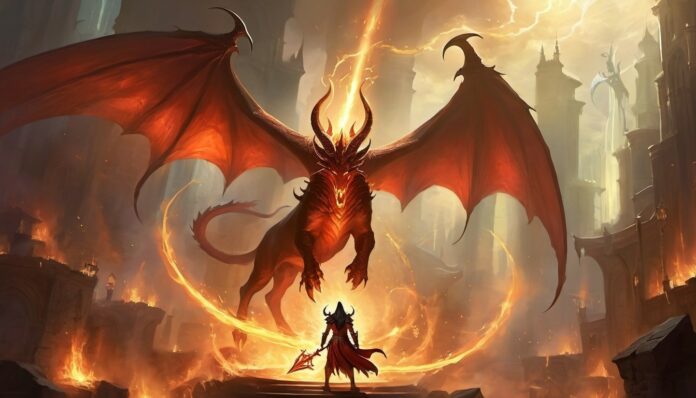In the rich tapestry of Norse mythology, few tales loom as large as the cataclysmic event known as Ragnarök. This epic saga of gods, giants, and the end of the world has captured the imaginations of storytellers for centuries.
According to Norse mythology, Ragnarök is a series of events that will ultimately lead to the destruction of the world. It is foretold that this apocalyptic battle will be waged among gods, giants, and other supernatural beings, resulting in widespread devastation.
The Players in the Final Battle
At the heart of Ragnarök are the gods of Asgard, led by Odin, Thor, and Loki. They will face off against their sworn enemies, including the fire giant Surtr, the monstrous wolf Fenrir, and the world-devouring serpent Jormungandr. As the forces of chaos and destruction gather, the fate of the world hangs in the balance.
In the lead-up to Ragnarök, there are several ominous signs that signal the impending apocalypse. These include natural disasters, wars, and the breaking of ancient bonds. As tensions rise and alliances falter, the world hurtles towards its final reckoning.
The Battle of Battles
When Ragnarök finally arrives, it will unleash an epic clash of cosmic proportions. The gods will engage their enemies in a fierce battle that will shake the very foundations of the world. As swords clash and fire rains from the heavens, the fate of all creation will be decided.
The Aftermath
Despite their valorous efforts, the gods are destined to fall in battle, paving the way for a new world to rise from the ashes of the old. As the dust settles and the smoke clears, a new era will dawn, heralding the beginning of a fresh cycle of creation and destruction.
Ragnarök is more than just a tale of epic battles and world-ending cataclysms. It is a powerful metaphor for the cyclical nature of existence, the eternal struggle between order and chaos, and the inevitability of change and renewal. In the depths of darkness, there is always the promise of light.
Lessons for Today
Though Ragnarök is a myth from a bygone era, its lessons remain relevant in the modern world. It reminds us of the fragility of existence, the impermanence of power and glory, and the resilience of the human spirit in the face of adversity. In times of uncertainty, may we draw strength from the tales of old and face the challenges ahead with courage and conviction.
Conclusion
Ragnarök stands as a testament to the enduring power of Norse mythology and the timeless themes it explores. As we contemplate the epic saga of gods and giants, may we find inspiration in the stories of old and strive to forge our own destinies in the ever-changing tapestry of life.
